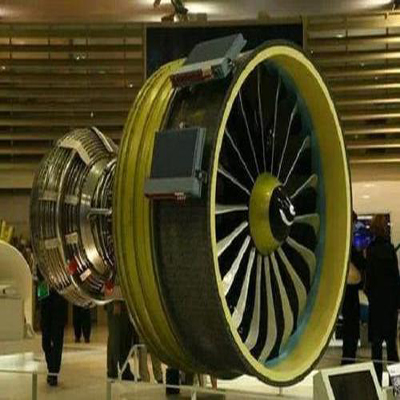- Home
- Products
- Elementary
- Boride Powder
- 3D Printing Powder
- Sulfide Powder
- Oxide Powder
- Carbide powder
- Nitride Powder
- Silicide Powder
- Hydride Powder
- Telluride Powder
- Selenide Powder
- Stearic Acid Series
- Phosphide Powder
- Nanoparticles
- Metal Alloy
- MAX Phase
- Lithium Battery Anode
- Surfactant
- Molecular sieves
- Concrete Admixtures
- News
- Answers
- Contact
- About
News
- 0
- 0
About Silicon Carbide Ceramics Some Things You Dont Know
If you are looking for high-quality products, please feel free to contact us and send an inquiry, email: brad@ihpa.net
Silicon carbide ceramic homes
Silicon carbide ceramics have high firmness, high melting point (2400 ℃), high wear resistance and corrosion resistance, along with excellent oxidation resistance, heat toughness, chemical security, thermal shock resistance, thermal conductivity and good air rigidity. As well as so, it has actually been commonly made use of in power, metallurgy, machinery, oil, chemical, aviation, aerospace, protection and also other fields.

Black silicon carbide and also green silicon carbide: The rough market repeatedly divides silicon carbide into black carbonized laurel and also green silicon carbide according to shade, both of which are hexagonal crystals, as well as all come from α& alpha;
-SiC. Black silicon carbide has concerning 98.5% SiC. Black silicon carbide is constructed from quartz sand, petroleum coke as well as premium silica as the main raw materials, as well as is smelted by electric heater at high temperature. Its hardness is in between corundum and ruby, the mechanical toughness is greater than corundum, and also it is fragile and sharp. Its sturdiness is higher than that of environment-friendly silicon carbide, as well as it is primarily utilized to refine materials with low tensile stamina, such as glass, porcelains, stone, refractory products, cast iron as well as non-ferrous metals.
Eco-friendly silicon carbide contains even more than 99% SiC. Green silicon carbide is constructed from oil coke and also top notch silica. It is added with salt as an additive and also is heated by high temperature furnace. It is self-sharpening as well as is primarily utilized for machining tough alloys, alloys and also optical glass. It is additionally used for wear-resistant cyndrical tube linings and also fine-grained high-speed steel devices.

Silicon carbide ceramic usage: The strong covalent bond of SiC is the origin reason of a collection of superb residential or commercial properties of SiC porcelains, but it also brings troubles in sintering. The covalent bond is too solid, which prevents the sintering densification of SiC porcelains. Consequently, the sintering temperature level needs to be increased., which boosts the cost and also limits its application in market.
From the viewpoint of thermodynamics, the decrease of free energy brought on by the jumble of the initial powder throughout sintering is the main driving pressure for densification. Nevertheless, the totally free power of the SiC grain border is fairly high, leading to a decline in the complimentary power of the powder also if the pile ends up being a solid-solid user interface from the solid-gas user interface. The smaller the complimentary energy difference is, the smaller the driving pressure of the sintering procedure is. For that reason, the SiC powder is more tough to be sintered than other ceramics. The current common approach is to add sintering aid, lower the initial powder fragment dimension as well as pressurize. Change its complimentary energy and promote the densification of SiC.
From the perspective of kinetics, the main mass transfer systems in the sintering process are: dissipation and also condensation, viscous circulation, surface diffusion, grain border or latticework diffusion as well as plastic contortion. The solid covalent bond of SiC brings about slower solid-phase mass transfer rate such as lattice diffusion and also surface diffusion, while gas phase mass transfer needs high temperature level to promote powder decay. The decomposition temperature level of SiC is up to 2500 °& deg; C, so counting on gas stage mass transfer to realize porcelains Densification is impossible. For that reason, the existing sintering procedure mostly attains the viscous flow by adding a sintering aid to enhance the strong stage diffusion rate of SiC or to develop a viscous liquid glass phase-assisted SiC.

SiC ceramics are extremely pure and can enhance the thermal conductivity of SiC porcelains without other impurities. Nonetheless, in the sintering procedure, sintering aids need to be presented to reduce the sintering temperature as well as boost the thickness. Just how to solve the opposition in between the 2 is the sintering of high thermal conductivity SiC porcelains. Troubles and priorities.
Al2O3 ceramics have fairly reduced sintering temperature, affordable and also excellent electrical insulation performance. They have been widely made use of, but their thermal conductivity is low, and their application in high-power circuits is restricted.
BeO porcelains have excellent dielectric residential properties and also are made use of as high-heat-conducting substratum products in some areas. Nevertheless, as a result of the toxicity of BeO, Europe, the United States, Japan and other locations have begun to release regulations restricting the sales and advancement of electronic products having BeO.
AlN ceramics have excellent thermal as well as electric insulation as well as low dielectric consistent, making them suitable for high power circuits. Nevertheless, the sintering temperature level of AlN porcelains is expensive, leading to a complex preparation process as well as high price, and has actually not been subjected to large production and also application. And also AlN is prone to hydrolysis response, as well as its dependability is poor in wet atmospheres.
SiC ceramics have low density, high mechanical toughness, great oxidation resistance, put on resistance, exceptional thermal shock resistance, small thermal development coefficient and also high thermal expansion coefficient matching with the chip. They are immune to chemical deterioration as well as have great advancement in the field of electronic items. And the application prospects can satisfy the demands of high performance, little dimension, lightweight as well as high reliability of digital tools in the future.
Luoyang Tech Co., Ltd is a professional Silicon carbide ceramic producer with over 12 years experience in chemical products r & d. If you are looking for excellent quality Silicon carbide ceramic, please feel free to call us and send a questions.
Inquiry us